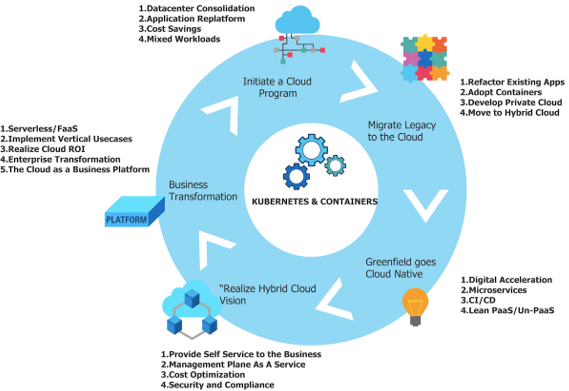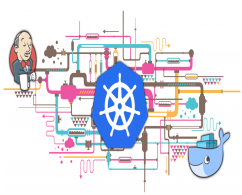Digital Transformation with Containers and Kubernetes
The unpredictable spread of COVID-19 has disrupted lives, companies, social activities, and business all around the world. The COVID-19 pandemic has already transformed into economic shock impacting all businesses regardless of their sizes, and technologies. The Enterprises that looking to compete in the marketplace, integrates various technologies to reduce the effects of COVID-19.
It’s predictable that the rate of technological innovation will be increasing and expanding after the COVID-19 pandemic. Also, the reasons enterprises are undergoing digital transformations become more clear.
- Gain customer satisfaction in an innovative and captivating way
- Improve service and operational quality
- Lower Cost
- Adaptation to the new technologies
- Make remote work more effective
Containers, package applications with their dependencies to run almost anywhere. Containers are a smooth way to build, test, deploy applications independent of infrastructure. The infrastructure platform can be a developer’s laptop, an on-premises data center, and even the cloud.
.
Benefits of the Containers:
· Resource optimization: Container-based application requires fewer system resources than traditional methods.
· Dependencies and Portability: Container-based application contains its dependencies. It easy to deploy multiple platforms and no vendor lock-In.
· Operational efficiency and Deployment consistency: DevOps team knows how the application runs on the production platform and perform the operational tasks in a partial deployment without downtime. Containers support the Agile methodology to advance the deployment lifecycle.
Kubernetes is a portable, extensible, open-source platform for managing containerized workloads and services, that facilitates both declarative configuration and automation. It has a large, rapidly growing ecosystem.
Basically, Kubernetes manage and orchestrate the operation of multiple containers in harmony together.
Benefits of the Kubernetes:
- Service discovery and load balancing
- Automated rollouts and rollbacks
- Storage orchestration
- Automatic bin packing
- Self-healing
- Secret and configuration management
Containers and Kubernetes affected digital transformation in a predictable way:
-
Shorten software’s time to market: One of the main benefits of Kubernetes and containers is the ability to speed up development, build, test, and deployment phases. Kubernetes offers several features and already created templates with combined open source technologies.
-
Improve developer agility and productivity: The containers enable developers to run applications consistently across environments. This feature allows developers to work remotely by reducing dependency on the company. No VPN connection or security concern for the developers. They can focus on only agility and productivity.
-
Respond faster to change: Container-based applications use a microservice architecture that has a collection of small, autonomous services. Each service is self-contained and should implement a single business capability. This architecture speeds up the DevOps lifecycle of a specific application.
-
Reducing downtime and resource costs: Container-based application requires fewer system resources than traditional methods. Kubernetes support the Agile methodology to advance the deployment lifecycle. Kubernetes is designed for deployment and offers useful features like automated rollout-rollback.
-
Scalability and modularity: Containers are considered lightweight. This feature enables developers to develop applications more quickly, and scale more granularly and cost-effectively, to reliably deliver consistent digital innovation to their end-users.



